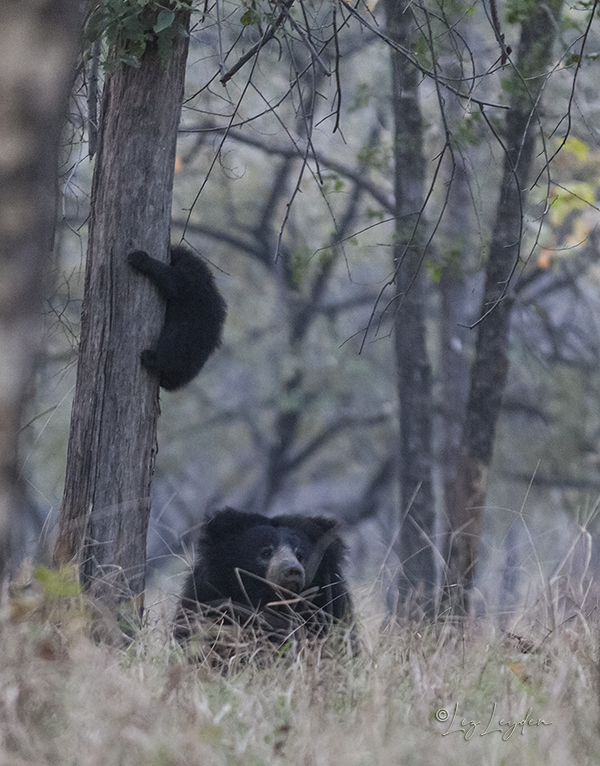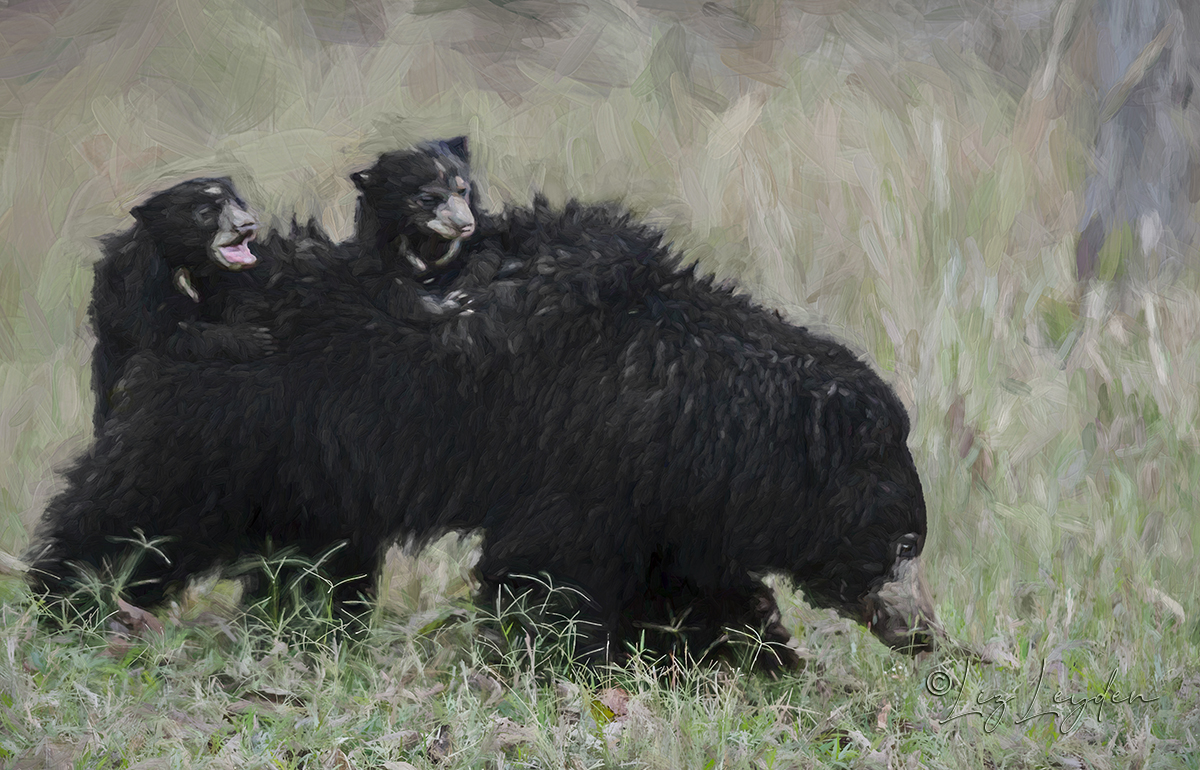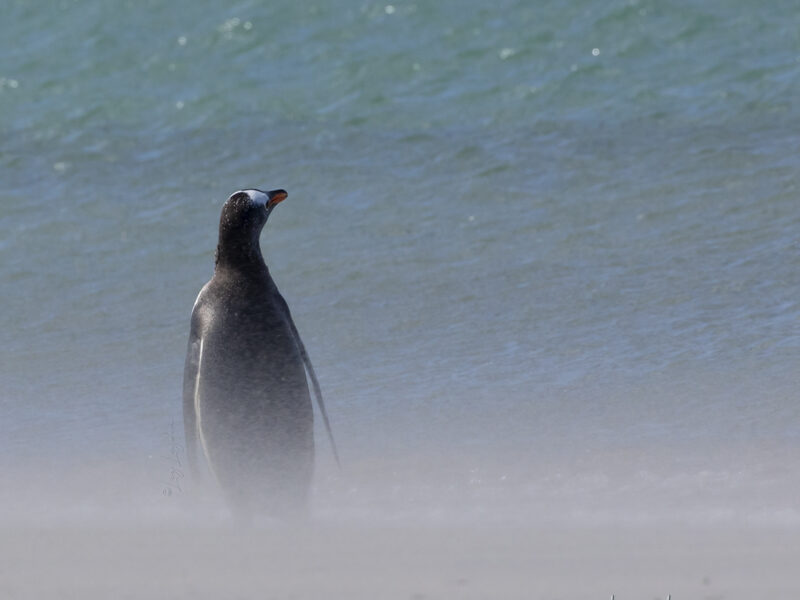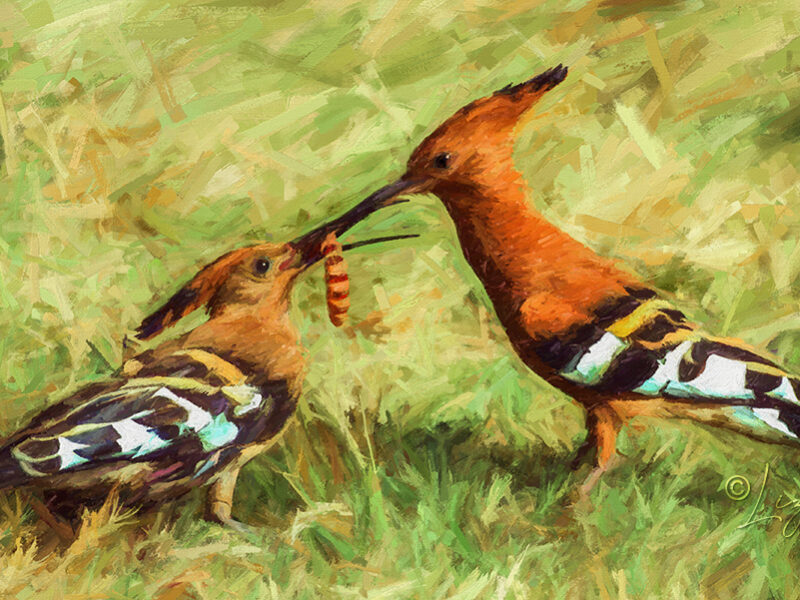A mother Sloth Bear, Melursus ursinus, with two little cubs, about six weeks old, riding on her back. The rear cub is calling as it is sliding off at the back! Originally photographed in Satpura National Park, Madhya Pradesh, central India.
They favour forested or scrubby areas, but can also be found on grasslands in the dry season. They are omnivores, feeding on fruits, flowers, honey, eggs, small mammals, insects, larvae, and are known to break into termite mounds to scoop out pawfuls of food.
It has a patchy distribution through India, Bhutan, Nepal and Sri Lanka. The last proven records of Sloth Bear from Bangladesh were in the 1990s. Sloth Bears are rated as Vulnerable on the IUCN Red List. Sloth Bears are also CITES Appendix 1 listed, and are protected under Schedule 1 of the Indian Wildlife Protection Act. The most serious threats against Sloth Bears are habitat loss and poaching.
Female sloth bears normally have one or two cubs, but occasionally three cubs. They are born in dens, and cubs remain with their mothers for about eighteen months. When they are very small, they often ride on their mother’s back. No other species of bear cub does this.

The mother bear encourages her cubs to climb trees, which strengthens their toes and claws.
This photo was taken at first light. The cub jumped down from Mum’s back, then shot up and down the tree in a flash and jumped from the tree back onto Mum’s back. So cute!
However, adult Sloth Bears don’t climb trees to escape from danger. Its only natural predators are tiger and occasionally leopard.
Both images are copyright © Liz Leyden, all rights reserved.
The image of a mother Sloth Bear with two cubs on her back is for sale as wall art or as various home or personal accessories at Pixels.com.
The original photo of the two Sloth Bear cubs on their mother’s back is also available to license as a stock photo from iStock, as is the photo of the cub climbing a tree.


